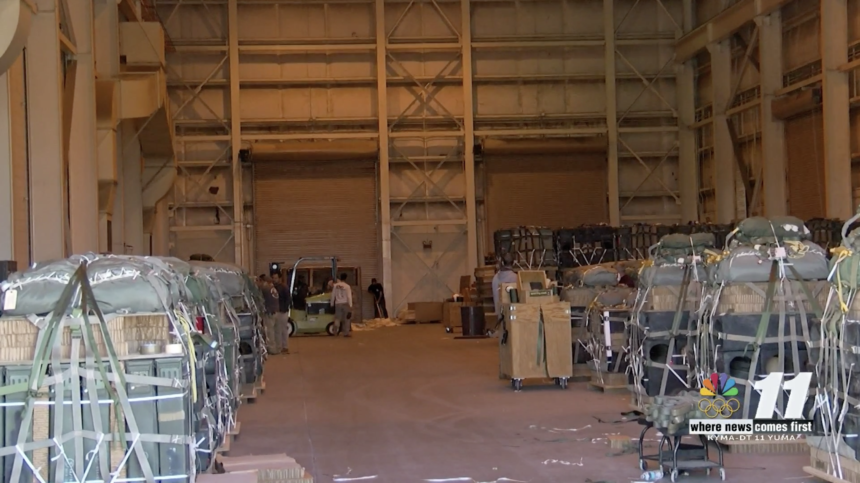Inside look: YPG facility tests military aerial delivery tech advancements

Airborne Test Force at Yuma Proving Ground
YUMA, Ariz. (KYMA) - The Airborne Test Force (ATF) is a small fraction of the Department of Defense but it plays a significant role in military combat.
In the middle of combat, the most efficient way to supply soldiers with equipment is to airdrop it by parachute.
ATF Chief Warrant Officer, Travus Heffernan, said, “[The parachute] goes out the aircraft and lands. The soldier de-rigs it. Takes the parachute off... they get into it and drives away.”
On the daily, ATF works to further advance technology to airdrop supplies to soldiers at war.
At YPG, parachute systems are repaired, prepped, and pushed to the extreme by ATF jumpers.
Parachute riggers ensure the systems are packed and rigged properly by the book.
From stitching every thread with precision to single-handedly untangling each nylon cord, the devil is in the details when packing each of the military parachutes.
Riggers say there’s no room for error.
Heffernan said, “Because of the layers of safety, [jumpers never] wear the parachute until it's been dropped out of an aircraft on a mannequin hundreds of times.”
Overload tests using the theory of airdrop are conducted to increasingly challenge the amount of weight a parachute can hold.
Some capable of carrying cargo heavy as an adult hippo.
Parachute rigger, Terry Horseman, said, “[One parachute system] is capable of holding about 5,000lbs of cargo to the ground.”
Jumper and parachute rigger, Sgt. Steve Lehoux, said, “[The parachute system] feels weightless once you’re actually in freefall.”
As tensions rise between the U.S. and Iran, there’s no telling how long troops will be deployed in the Middle East.
Heffernan believes airdrops will eventually be necessary if the deployment is extensive.
“The next waves that will go out there if they go forward and vehicles can't resupply [soldiers] that's when we come into play and we'll bring [supplies] via airdrop,” Heffernan said.
“[Soldiers] wouldn’t have any food, water, [or] ammunition if it wasn’t for us being able to airdrop into locations where they don’t have access to trucks or convoys," said Lehoux.
The testing of airborne equipment can take up to ten years in some cases.
However, depending on the level of urgency, a parachute tested at YPG can be expedited and on the battlefield within months.
